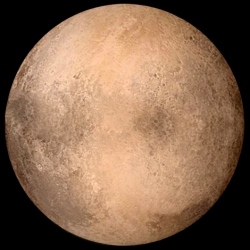
Red dwarfs, otherwise referred to as M dwarfs, are relatively cool main sequence stars that are thought to make up around two thirds of the stars currently in the Milky Way. Smaller and less powerful than our Sun, astronomers estimate that there are billions of exoplanets orbiting red dwarf stars in our galaxy alone.
Studies carried out by observatories such as Kepler and the TRAPPIST telescope have revealed a number of Earth-sized planets orbiting in the HZ of red dwarf stars. Astronomers naturally prize Earth-like exoplanets as a potential breeding ground for life, due to the fact that they are a relatively close analog of our own planet.
Furthermore, owing to the low luminosity of red dwarf stars, their HZs are relatively close to their cores compared to the HZ of our Sun, which makes it much easier to detect orbiting terrestrial-size planets via either the transit or Doppler methods. And because of the abundance of targets, red dwarfs are becoming ever more attractive in the hunt for exoplanets capable of hosting life.
However, it is established that many of the exoplanets orbiting red dwarfs are created with dense atmospheres composed of hydrogen and helium that could make up as much as 1 percent of a planet’s total mass. Whilst this may sound relatively insignificant, it is worth noting that Earth’s atmosphere accounts for around a millionth of its mass.
An atmosphere of 1 percent of a planet’s mass would create a runaway greenhouse effect, making the planet far too hot to sustain liquid water, which is one of the key building blocks of life. Planetary scientists had harbored a belief that over a prolonged period of time, these ultra-dense atmospheres would be thinned out by a bombardment of ultraviolet and X-ray radiation being thrown out by the nearby red dwarf, allowing the planets to cool to a more hospitable temperature.
However, according to computer simulations carried out by researchers from Imperial College London and the Institute for Advanced Studies, Princeton, Earth-sized planets are massive enough to resist shedding their atmosphere to space, and would remain uninhabitable.
The team used hydrodynamic models that took into account the stellar evolution of a red dwarf, as well as the thermal evolution of the planet, alongside a myriad of other factors, coming to the conclusion that previous studies had dramatically overestimated atmospheric mass loss rates.
The researchers are keen to point out that just because Earth-like planets orbiting M dwarfs are incapable of supporting life, it does not mean that it is impossible for life to exist on lower mass planets existing in the HZ. It is possible that the gravity of a planet with a mass approximating that of Venus or Mars would be too weak to hold on to the majority of its atmosphere.
In time, the intense greenhouse effect heating the low mass exoplanets may subside, resulting in surface conditions amenable to the presence of liquid water. Ongoing and future studies making use of both ground-based and orbital observatories are expected to provide definitive evidence regarding the habitability of exoplanets orbiting red dwarf stars.
